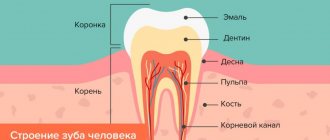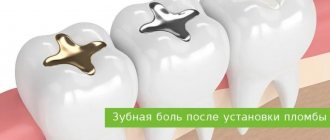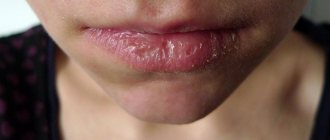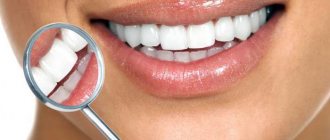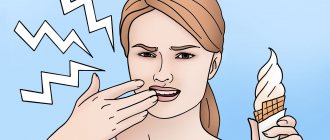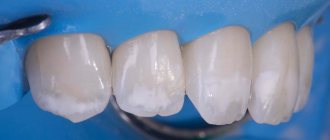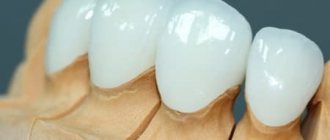Hundreds of pages on the Internet give very “useful” advice on how to get rid of toothache and cure caries with folk remedies. Do you carefully study such pages, memorize all the advice, and also take notes on the particularly tricky ones? When you have a toothache, is it easier for you to read a spell for the waxing moon, kiss a live toad at midnight and rinse your mouth with a decoction of urine from a five-month-old baby, rather than go to the dentist? Then it’s time for you to find out that there is dentistry without pain, that in a modern clinic absolutely painless treatment of caries is possible, and a good doctor will do everything possible to make you feel, if not at home, then at least not like in a torture chamber in the dental chair.
Some people have such a serious fear of dental treatment that they are ready to endure the pain until the last moment, put up with tooth decay and come to the doctor only when the pain is not relieved by any analgesics and because of it the fear is temporarily dulled. Unfortunately, with such a late application, all that remains is to remove the diseased tooth, and the person leaves the clinic happy (he got off easy, he didn’t even have to treat!) and disappears from the dentists’ field of view until the next time - when the next diseased tooth has to be removed. Doctors can tell many stories about relatively young people who were left with practically no teeth, but did not even try to at least replace the lost dental units with a prosthesis, since they could not save theirs. And this is despite the fact that today there are many methods of prosthetics without grinding teeth, which is usually the most feared.
It would be stupid to reproach and shame a person for something for which he is not to blame - after all, none of us fully knows how to control our fears. Therefore, we will neither cause a feeling of guilt nor put pressure on a sense of responsibility. We will simply tell you what methods of painless dental treatment exist today and how you can make up your mind and finally trust the dentist.
Is it painful to treat caries?
One of the most frequently asked questions when going to the dentist is whether it hurts to treat caries. Sitting down in a chair, we warn the doctor that we have a low pain threshold and, in general, we are simply afraid. The doctor will definitely select a drug that will make the treatment comfortable and painless, even in the most difficult cases.
Today, caries can be cured absolutely painlessly.
Without anesthesia
In rare cases, doctors have to carry out treatment without anesthesia. This usually happens when there is an allergy to anesthetics. If the patient is intolerant to drugs, the doctor may suggest treatment with laser or chemical reagents. General anesthesia is also an option.
As a rule, the majority of people prefer to undergo treatment under local anesthesia. But there are brave souls who have a high pain threshold or even prefer to do without an injection.
If we are talking about superficial caries, when the tooth tissue is not yet damaged, then this is understandable. But with medium and deep caries, such pain is almost impossible to endure without anesthesia. And it’s not necessary - the latest generation of anesthetics do not cause allergic reactions, they can be used even when treating children and pregnant women.
There is no point in being a hero when treating teeth - without anesthesia it will hurt. And talking about savings also makes no sense.
Wisdom tooth hurts after treatment
Often, patients who have undergone wisdom teeth treatment for caries complain of pain for a long time. Pain syndrome is normal, since figure eights have a more complex structure and have increased sensitivity.
After conservative treatment, pain is considered normal, which decreases in intensity within 5–7 days and then disappears completely. After extraction, due to the persistence of a large wound and traumatic manipulations, pain in the area of the extracted tooth may be felt for 10–14 days. After two weeks, the pain should be eliminated or almost not felt.
If the pain lasts longer or the sensations cause severe agony, you should immediately contact a specialist. Complications may develop that require immediate dental attention.
Wisdom teeth are difficult to treat; due to the lack of their functional significance in the presence of acute processes, dentists do not recommend saving the tooth. To avoid the consequences of caries of eights, experts advise visiting a dental clinic every 6 months for a preventive examination and professional teeth cleaning.
On the front teeth
The main feature of caries on the front teeth is that it develops very quickly. Due to the high load, the enamel quickly becomes thinner, causing tissue destruction to occur at a rapid pace. In advanced cases, severe pain begins, especially while eating. It is also necessary to talk about the aesthetic aspect - caries on the front teeth instantly attracts attention.
It is not painful to treat caries on the front teeth under local anesthesia. Perhaps the doctor will slightly increase the dosage of the drug to completely eliminate sensitivity.
Important. If you notice a spot or initial caries on your front teeth, we recommend that you immediately contact your dentist. If you wait, you risk losing a tooth in the most visible place. And this means additional costs for prosthetics.
Which is better: removal or treatment?
If on other teeth a carious lesion is an indication for treatment and removal is carried out only in case of serious complications, then when eights are affected the situation is always ambiguous.
It is not always possible to treat wisdom teeth caries. Mostly, treatment is used when the lower eights are affected, access to which is more free. Upper jaw caries of wisdom teeth is much more difficult to treat, since the dentist does not always have access to the center of the carious lesion and, even more so, cannot carry out high-quality cleaning and filling of the canals when the infection penetrates deeply.
For this reason, dentists often recommend removing decayed wisdom teeth if:
- the diseased molar is located on the upper jaw;
- caries is diagnosed at a deep stage;
- the tooth has crumbled and cannot be restored;
- there is no figure eight on the opposite jaw;
- the tooth is dystopic or impacted;
- the root system is twisted.
Wisdom tooth caries should be treated when the lesion is detected at the initial or middle stage, the tooth does not have any anomalies in eruption and formation, or it will serve as a support for the prosthesis during the planned prosthetics.
Cervical caries
The majority of patients believe that the treatment of cervical caries is particularly painful. In principle, this is how it is - the cervical zone is characterized by increased sensitivity. Without anesthesia, it will undoubtedly hurt.
Cervical caries can not only be “in plain sight”, but also spread deeper. Therefore, the question of carrying out treatment without anesthesia is not even raised.
How to avoid getting sick
You need to regularly monitor the condition of your teeth, not only from the outside, but also from the inside. It is no coincidence that doctors advise cleaning them 2 times a day - this is required to prevent infections. But don’t forget about following your diet; you need to eat enough:
- hard vegetables and fruits (apples, carrots, cucumbers, beets, etc.);
- greens (parsley, lettuce, dill, celery);
- berries (currants, grapes, strawberries, cranberries);
- nuts (almonds, cedar, cashews);
- dairy products (cheese, cottage cheese, natural yogurt without additives);
- citrus fruits (grapefruit, lime, orange);
- seafood (fish, shrimp);
- eggs (chicken, quail);
- honey;
- water and tea without dyes (green and black).
Do not forget about the correct cleaning technique: you need to brush each unit from the gum to the cutting edge so that the dirt does not remain in the crevices and does not oxidize. It is convenient to use dental floss for this.
Average caries
With average caries, not only the enamel is destroyed, but the dentin is also affected. The disease at this stage is practically asymptomatic; sensitivity may occur when biting.
Treatment of average caries takes place with anesthesia, which allows the patient not to experience discomfort and feel absolutely comfortable.
Deep caries
Deep caries is characterized by extensive damage to the hard tissues of the tooth. Painful sensations occur during eating and under the influence of temperatures - the tooth reacts to hot and cold. The carious cavity is separated from the pulp by a thin layer of dentin, which explains the increased sensitivity of the tooth to irritants.
Deep caries cannot be treated without pain relief. The use of anesthetics ensures a comfortable state for the patient during treatment with a complete absence of pain.
Classification of caries by localization
Scientist Black (USA) developed a classification of carious cavities by location:
- Class I: damage to cavities in the area of fissures and natural recesses of the teeth;
- Class II: damage to cavities located on the contact surfaces of small and large molars;
- Class III: damage to cavities located on the contact surfaces of the incisors and canines without involving the cutting edge;
- Class IV: damage to cavities located on the contact surfaces of the incisors and canines, involving the cutting edge and corners;
- Class V: damage to cavities located in the neck area of all groups of teeth;
- Class VI: damage to cavities of atypical localization - the cutting edges of the frontal teeth and the cusps of the chewing teeth.
Why do teeth hurt with caries?
Mostly, painful sensations appear already at the stage of deep caries. In this case, the pulp (nervous tissue of the tooth) is separated from the oral cavity by only a thin layer of dentin and reacts to irritants. Pain appears when brushing teeth, when food gets into a carious cavity, as well as from spicy, sweet, and salty foods.
Under the influence of irritants in the pulp, blood flow increases, which leads to excess pressure on the nerve fibers. The pain goes away quite quickly, immediately after the irritant is removed.
Important. Without treatment, deep caries turns into pulpitis. The inflammatory process affects the nerve fibers, the pain gradually becomes unbearable - constant or throbbing, sharp or dull, localized or spreading.
Why are people afraid of dentists?
Each patient has his own story of fear; it is a pity that fear of dental intervention leads to advanced caries and pulpitis. The older generation remembers the sound of a drill, sanitation at school without pain relief, a mouth full of saliva. There was little time allotted for the appointment, so the dentist did not explain anything or reassure. The younger generation has different fears. Some are afraid of injections, others are afraid of helplessness in the dental chair, others are worried that the doctor will lecture them about insufficient hygiene and poor dental condition.
In our clinic we guarantee the absence of pain and moral discomfort. We explain, tell, distract from worries, give advice on oral care.
Stages of caries
The causes of caries include hereditary factors, the quantity and quality of saliva, and disturbances in protein and mineral metabolism in dental tissues. Oral hygiene plays an important role, as does excessive consumption of sweets. Another factor contributing to the occurrence of caries is a lack of calcium and phosphorus in the diet. Teeth can rapidly deteriorate during pregnancy or after suffering from infectious diseases.
Caries develops gradually. Over time, without treatment, a carious cavity appears in place of an almost invisible spot, which at a certain point begins to increase, affecting an increasing amount of dentin.
Experts distinguish four stages of caries development - carious spot, superficial caries, medium caries, deep caries.
Classification according to the severity of the process
Clinical observations have established that the severity and speed of development of the carious process determine the methods and tactics of its treatment. Based on the results of these studies, the well-known specialist in the field of dentistry T.V. Vinogradova proposed a classification of caries according to the severity and prevalence of the carious process:
Compensated form of caries
With this form of caries, the average intensity of pathological processes is less than the average intensity for this age group. The disease spreads slowly, carious cavities are lined with hard, pigmented dentin (chronic caries).
Generalized caries
The average intensity of caries approximately corresponds to the average for a certain age group.
Decompensated form of caries
The intensity in the decompensated form significantly exceeds the average for the age groups studied. In this form, the carious process proceeds very intensively; in this form of caries, a large number of carious cavities filled with soft dentin are observed. The extreme form of acute caries is the so-called “systemic damage” of teeth by caries, in which carious lesions are observed in almost all or all teeth in the cervical area.
Caries in the spot stage
Initial stage of caries. Characterized by the appearance of spots on the enamel. In the demineralized area, damage to the enamel structure is observed. As a rule, patients cannot detect it themselves.
The spot may be white or pigmented. If a brown or black stain is easy to notice, then a coated stain can only be diagnosed using an aqueous solution of methylene blue.
Important. With timely treatment, remineralization therapy can be carried out and tissue can be restored. This is why experts recommend visiting the dentist once every six months - in order to take timely measures and prevent caries from developing.
The carious spot is treated with solutions of sodium fluoride and calcium fluoride. The patient is prescribed vitamins, calcium and phosphorus supplements, and brushing teeth with fluoridated toothpaste is recommended. Your doctor may also recommend a special diet that includes foods high in calcium and certain proteins.
Icon: caries treatment without preparation
In the early stages of caries, Icon dental treatment is successfully used when drilling is not required at all. Dental surfaces are treated with a special chemical composition, which, permeating the tissues, disinfects and seals them. Essentially, a special filling is placed on the tooth, but you don’t have to drill into it for this filling. Unfortunately, treatment of caries without Icon preparation can only be used at the beginning of the development of the disease, when there is not yet a deep cavity in the diseased tooth. Therefore, for those who want to be treated quickly and painlessly, without an unpleasant preparation procedure, it is better to consult a doctor at the first signs of caries.
Veronika Aleksandrovna Ivantsova, dentist at the 32 Dent clinic: “The Icon dental treatment today is the most famous and popular technique that does not require drilling of dental tissue. But besides this, there are other technologies without preparation: ozone therapy, when diseased cells are removed by ozone cleaning, a non-contact abrasive technique, which is very similar in its mechanism of action to regular teeth brushing. In a modern, well-equipped clinic, the patient can always be offered a choice of several options for painless and completely comfortable treatment.”
Superficial caries
Affects only enamel with damage to the structure and the impossibility of restoration. At this stage, it is already possible for the damaged tooth to react to cold or hot.
Caries affects only the upper part of the tooth, without affecting the dentin. At this stage, treatment is already required. The dentist removes damaged tissue using a drill and installs a filling.
Since caries has not yet affected the tooth tissue, treatment can be carried out without anesthesia. But if you have a low pain threshold or are simply overcome by fear of the drill, you still need to perform local anesthesia.
Elimination of the disease
There are several options for treating caries; the choice of one or the other depends on the stage of its development and the financial capabilities of the patient.
Installation of veneers
Recently, this method has become very popular, especially among show business stars. It is good because with the help of special ceramic or polymer crowns you can hide all defects (shape, shade, etc.). But to install the plates, you need to grind off the dental tissue by about half and drill out all the affected areas. The custom-made veneer is then bonded using a non-toxic substance.
With high-quality installation, it can remain unchanged for up to 10-15 years.
The price of such a procedure at Dentic is about 30,000 rubles per tooth.
Crowns
They are used when the disease progresses to a deep stage and covers both sides of the incisor. They are usually made of metal and ceramics: these materials are very durable and are relatively cheap: 20 thousand rubles. But they also have a drawback: it is very difficult to choose a shade that will not stand out in the teeth. To avoid big differences, it is necessary to choose crowns made entirely of ceramic or zirconium.
Implantation
When caries destroys tissue down to the root, more serious measures must be taken. The diseased area is removed, and in its place an implant is implanted into the jaw. It is a strong rod that will hold the crown. Nowadays they make it very natural and aesthetic. The cost at Dentic starts from 30,000 rubles.
Prosthetics
There are cases when installing an implant becomes impossible, for example, when there is a risk that it will not take root, or the gums are not thick enough. Then special zirconium or ceramic prostheses are created, which are attached to adjacent units.
Treatment of caries between the front teeth with pinning
If only the root of the affected incisor remains intact, then a pin is inserted into it, having been carefully processed beforehand. It is then masked with a temporary crown for about a week while it takes root. Next they set a constant.
Average caries
At the third stage, caries already affects the tooth tissue – dentin. A small carious cavity forms, the tooth begins to bother and hurt. It reacts to cold air entering when talking or breathing, to leftover food, to cold and hot.
The manipulation is carried out under anesthesia, as the patient may experience quite strong pain. Depending on the degree of tissue damage, the dentist selects the necessary treatment. In most cases, the carious cavity is prepared, infected tissue is removed, and filling is performed.
Pain relief during treatment
For local anesthesia, drugs based on articaine and mepivacaine are used. Articaine-type drugs are more effective than novocaine - 5-6 times, lidocaine - 1.5-2 times.
Most anesthetics contain, in addition to the main active ingredient, vasoconstrictor components - adrenaline or epinephrine, which reduce the leaching of the anesthetic, which in turn leads to an increase in the duration of the effect in time and the strength of anesthesia.
Articaine anesthetics include:
Ultracaine
French drug, available in 1.7 ml carpules in three forms:
- Ultracaine DS forte
– containing 1:100,000 epinephrine. A highly effective anesthetic for operations and treatment of pulpy teeth. Not recommended for patients with thyroid diseases and cardiovascular pathologies. - Ultracaine DS
- with an epinephrine concentration of 1:200,000. Ideal for pain relief in pregnant and lactating women and patients with compensated cardiovascular diseases. - Ultracaine D
– without adrenaline/epinephrine. Used when there is a high risk of allergic manifestations. Can be used by patients with bronchial asthma, cardiovascular pathologies, and thyroid diseases.
The drug can be used starting from the age of four.
Septanest (France)
They are produced in two forms with an adrenaline content of 1:100,000 and 1:200,000. Unlike Ultracaine and Ubistezin, the anesthetic contains preservatives that have a strong allergenic effect.
The drug Scandonest is produced based on mepivacaine. The anesthetic does not contain preservatives or vasoconstrictors. Recommended for anesthesia for pregnant and lactating women suffering from cardiovascular diseases, bronchial asthma and thyroid diseases.
Important. When visiting a dentist, be sure to tell the doctor if you have allergies or chronic diseases. This will help the doctor choose the right anesthetic for you.
Will it hurt when I get an injection in the gum?
To administer the anesthetic, special carpule syringes with a very thin needle are used, which minimizes discomfort during the injection. The drug is administered quite slowly, over 40-45 seconds.
In most clinics, before the injection, so-called topical anesthesia is performed using a special anesthetic gel or septic tank. In this case, the specific area of the mucous membrane to which the composition was applied is anesthetized. In this case, the needle entry will be painless.
When to see a doctor, symptoms
Don’t delay going to the dentist if you suddenly experience even minor pain. The very fact of pain indicates that caries has begun to develop, which in some cases affects the tooth almost instantly.
When to go to the doctor:
- pain when biting;
- pain from temperature and chemical irritants;
- pain from exposure to cold air.
Without a doubt, the best option is to visit your dentist once every six months in order to take timely measures to prevent the development of caries.
Terrible drills are a thing of the past
The notorious drills, which with their sound could scare away all patients waiting for an appointment, and with the “elegance” of their work resembled a jackhammer, are a thing of the distant past. Today, dental clinics are equipped with modern, completely silent units that do not get on the nerves of patients with unpleasant buzzing and disgusting vibration. Even if the patient has to drill a tooth, today this can be done without noise or discomfort. Agree that the lion's share of hostility to dental treatment was formed precisely because of the fear of treating teeth with a disgustingly noisy “dental jackhammer.” Now that the likelihood of encountering an old-generation drill has been reduced to almost zero, you can go to the dentist with confidence and confidence.
Other equipment in dental clinics has also changed. Today, treating teeth has become much more pleasant and convenient than just 10 years ago. And technologies are constantly developing: new, comfortable, painless solutions appear. Today, prosthetics are not at all as uncomfortable and time-consuming as they used to be. It is quite possible to install a prosthesis without grinding the teeth, and implantation has reached such a high level that the degree of difficulty for the patient is similar to a regular tooth extraction.
But, of course, it’s better not to resort to prosthetics - if you pull yourself together from time to time and still visit the dentist for treatment, there is every chance of meeting old age with your own teeth.
Dentist at the 32 Dent clinic Mukhin Pavel Nikolaevich: “As paradoxical as it may sound, a person who is afraid of dental treatment needs to go to the dentist much more often than a “fearless” patient. Regular visits to the doctor will help to identify caries in time and cure it when neither drills nor dental pulp removal and canal cleaning are needed. Professional hygiene and annual medical examinations will help you maintain your dental health at a decent level and save yourself from serious dental treatment.”
Complications
Teeth do not heal on their own. In any case, you will have to see a doctor, but it is better to do this as soon as possible. If it so happens that for some reason you have delayed this process, be prepared for the fact that caries will turn into pulpitis or periodontitis.
The pain in such cases becomes unbearable - throbbing, pulling, almost incessant. At a certain point, the patient will not even be able to tell which tooth hurts, since the pain can take over the entire jaw and radiate to the eye, ear, and temple.
Diagnostics
Only a dentist can correctly determine the nature and stage of development of the disease.
Therefore, you should not neglect going to the doctor at least once a year. Now clinics use various examination methods:
- Vital coloring. A solution of 1% methylene blue is mixed with 0.5% red and applied to the tooth surface, after which the lesion acquires a different color. This is a very economical option, but not the most effective: the depth of distribution cannot be determined.
- Fluorescent radiation testing. If a carious process begins in any area, it will not glow.
- Electroodontometry. When exposed to electric current, the condition of the pulp is determined. This method is absolutely safe for all ages.
